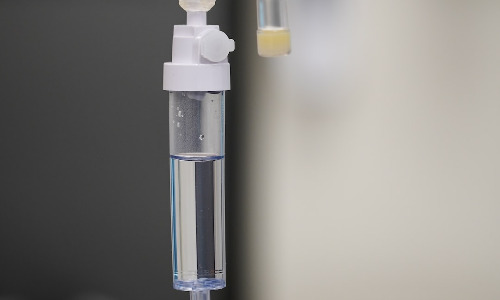(Warning: This blog post is non-technical but purely personal. I write openly about my current health issues. This blog might be triggering for people who struggle with, or lost dear ones to, cancer and other similar diseases.)
This is the tenth post in a series on my personal road from first signs of leukemia, through diagnosis and treatment, to, hopefully, full recovery. Click here to read all posts in this series.
Back in the hospital
It’s February 10. And I am back in the hospital. Finally. First planned for December 2. Then postponed to January 19, in order to remove a cancerous kidney. Then postponed again, to February 10, because the selected donor was disapproved. But now I finally am back in the hospital, to start what will hopefully by the final lap in my fight against leukemia: the stem cell transplantation procedure. I have received a lot of information about what to expect the coming weeks, and I want to share the highlights with you.
Rejection
Something I had not realized until it was mentioned, is that stem cell transplantation, just like organ transplantation, comes with the risk of rejection. I had assumed that this would be more like blood transfusion, where, as long as the blood type matches, rejection is not an issue. But I was wrong. Stem cell transplantation even has a double rejection risk. It comes with the same risk as organ transplantation where the recipient’s immune system sees the new organ as a hostile intruder and tries to fight it off. But in the case of a stem cell transplantation, because stem cells are the mother of the T-cells (the soldiers of the immune system), there is also a risk of “reverse rejection”, where the donor cells see their new host as hostile and try to fight off the recipient’s whole body.
Many of the procedures I can expect in the coming weeks are aimed at reducing the risk of rejection and reverse rejection as far as possible.
Rabbit protein
Today and tomorrow will be uneventful. I will get some medicines in preparation for the things to come, but nothing special yet. In fact, there is a (for me) unfortunate timing issue. The start of the actual treatment is on Sunday, because that day works best to align my schedule with the schedule of the donor. But Saturday is not a good day for hospital admissions. That’s the reasons they asked me to come now already, and effectively waste a day in hospital that I could have spent at home if the timing had been different.
The first stage of my treatment starts Sunday, when I will get my first intravenous dose of rabbit protein. “Rabbit protein?”, you may ask. Yes, rabbit protein. But not just any rabbit protein. The official name is ATG, short for antithymocyte globulin. ATG is produced by first injecting rabbits with human T-cells. Since those cells are alien to the rabbit body, the rabbit’s immune system will fight them off. At the end of this fight, the rabbit’s T-cells are trained to recognize human T-cells and fight them. Those rabbit T-cells are then harvested, and that is the drug that will be given to me.
So once the ATG is administered, my own immune system will start to fight it off, since rabbit cells are as alien to me as human cells are to rabbits. But the ATG will fight back. This starts an epic (though perhaps unfair) battle of the rabbit T-cells that are already trained against the human immune system against my T-cells that will have to learn on the job. And to make things even more unfair, the doctors will replenish the rabbit T-cells daily for four days total, whereas the only replenishment for my own T-cells is what the stem cells in my bone marrow can produce.
It is expected that I will get very sick during these four days. Fevers of up to or even over 40°C (104°F) are to be expected. That is the reason why I am already hospitalized for this part of the treatment. And at the end of this four-day period, the expected end result of the battle should be a stalemate, where my immune system will have annihilated all of the rabbit cells, but at the expense of losing all, or at least most, of my own T-cells.
The reason for putting me through this ATG treatment is that it is beneficial for the rest of the procedure that my immune system is as tattered as possible once the donor stem cells are given to me. Remember what I wrote about the risk of rejection? Yeah, when I have no working immune system anymore, then there is far less risk that my immune system will attach the donor cells!
After this, there will be a two-day break, to give me a chance to recover. Another reason for this break is that, should my response to the ATG be too violent, they can pause the ATG temporarily, and use the two spare days to catch up on the days they skipped. On the other hand, if I am feeling well enough and there are no worrying signs in my vitals, I might even be allowed to be back home for one or both of those days. In most cases, though, these two days are needed to recover under professional supervision in the hospital.
More chemotherapy
The next phase of my treatment starts on February 19. And that phase is yet another round of chemotherapy. I have had two of those already. The first one lasted seven days, the second one six days. This third one will be only four days. But shorter does not mean lighter or easier. This will, in fact, be the most heavy of the three. Where the goal of the previous two rounds was to kill off the cancer cells in my bone marrow and accept loss of stem cells as an unfortunate side effect, this round of chemotherapy is designed to kill off everything it can find in my bone marrow. This should round up even the last of the cancer cells that might until now have been lurking in a quiet corner somewhere, biding their chance for a return. But it will also completely kill off my blood factory, the stem cells.
One reason for this very heavy-handed approach is to make sure that there really are no cancer cells left. Another reason is that, when none of my own stem cells are left, my body basically has no other choice but to use the donor stem cells as the template to replenish its supply. And then there is also the nice side effect that, with no functioning stem cells left, my immune system, that was completely destroyed by the rabbit protein, has no chance to recover, which once more reduces the risk of rejection.
Donation
After the chemotherapy, I will have one day rest, but on that day I will be given lots of new pills and other medicines. The most important of these is a medicine that is designed to suppress the immune system. My own immune system has of course already been minimized due to rabbit protein and chemotherapy, but this medicine then takes that to the next level. And this medicine will also reduce the chance of reverse rejection, where the immune system in the donor stem cells will try to fight off my body.
Then, on February 24, I will receive the donor cells. The timing here is aligned with the moment that the chemotherapy of the previous days has maximum effect, the start of the so-called “dip” phase where my blood, and hence also my immune system, is at its lowest. At this point, the hope is that my body will accept the donor cells and use them as templates to start rebuilding more stem cells, and also as a template for new blood cells.
I will stay in the hospital for, probably, one to two weeks after receiving the donor stem cells. I will be here, in the care of medical professionals, for the entire duration of that “dip” phase, to ensure I get donor blood when needed, to keep monitoring me and acting if and as needed if there are any signs of infection, and of course to check on how well my body accepts (or does not accept) the donor cells.
The exact date of my release from hospital depends on how fast, or how slow, my recovery processes. And obviously also on whether or not there are any other complications. For now, my personal expectation is that when nothing unexpected happens I should be back home somewhere in the second half of March.
You are not prepared!
I have been explained the entire procedure. Basically the same explanation that I have now relayed to you, but with more details of all the medicines that I will be given, what they are for, what side effects they might have, etc. So I guess I am as prepared as one can be.
But can one really be prepared for a procedure such as this? Frankly, I don’t think so. I think that whatever I expect will not happen, and whatever will happen will not be what I expect.
So the coming weeks, I will just live my life one day at a time, taking things as they come, doing the things the doctors tell me to do to maximize the chance of success.
The next post in this blog series will probably be after this whole procedure is over, when I am back home, ready to start the (very long – but I’ll get back to that by then) road to recovery.






8 Comments. Leave new
Best of luck on all this brother. Know that you are respected and appreciated. You’ll come out the other side.
I pray for a successful procedure and speedy recovery!
❤️
Thinking of you Hugo. Hoping for a speedy recovery.
Veel sterkte en een goed herstel
Sterkte Hugo. Je bent vaak in gedachte bij me
[…] medication (lots and lots and lots of pills, plus several intravenously applied medications – see my previous blog in this series), had my daily family visits, and spent the rest of the day doing some work on my […]
[…] wrote, I consider my leukemia diary closed now. And since today is exactly one year after my stem cell donation, I now officially have no restrictions on travel anymore. So let’s celebrate that by attending […]